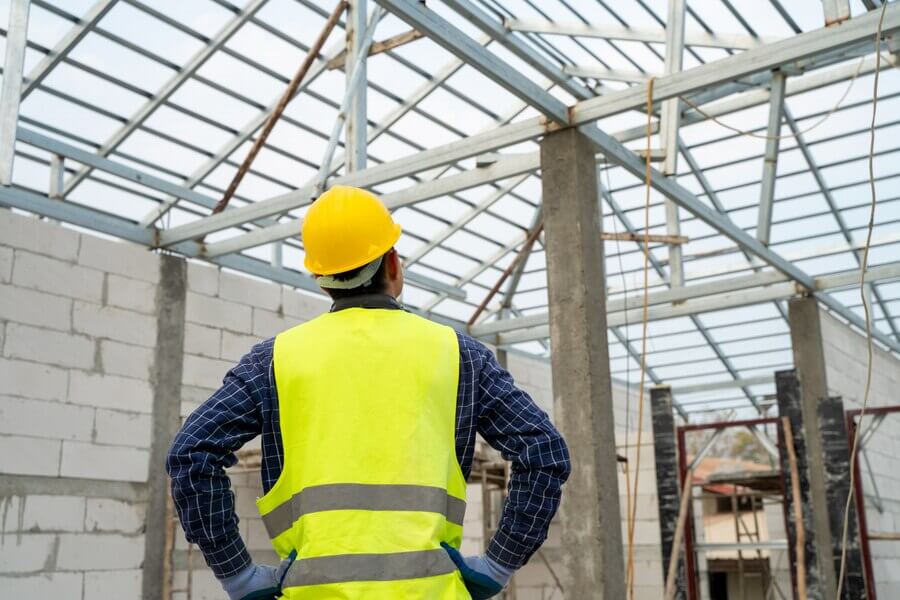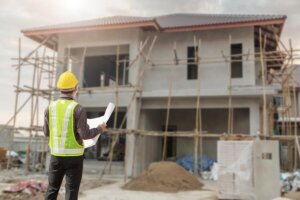Sustainable construction is more than just a buzzword; it’s a critical imperative for our planet’s future. As the global population grows and urbanization accelerates, the demand for buildings and infrastructure increases, putting immense pressure on our natural resources and exacerbating environmental degradation. However, amidst these challenges lies an opportunity to redefine how we build, embrace practices that minimize our ecological footprint, and create spaces that enhance human well-being and environmental resilience. This article delves into sustainable construction principles, innovations, and significance in shaping a more sustainable tomorrow.
The Need for Sustainable Construction
Environmental concerns such as climate change, resource depletion, and pollution drive the need for sustainable construction. Traditional construction methods contribute significantly to these issues, necessitating a shift towards more eco-friendly practices. However, sustainable construction offers more than just environmental benefits. It also brings social and economic advantages, including improved occupant health and productivity, reduced operating costs, and job creation in green industries.
Furthermore, regulatory and policy drivers at both local and global levels are increasingly pushing for sustainable building practices, ranging from energy efficiency standards to incentives for green building certifications. Embracing sustainable construction is thus essential for addressing environmental challenges while fostering social and economic development.
Fundamental Principles of Sustainable Construction
Sustainable construction is guided by several critical principles to minimize environmental impact and promote resource efficiency. These principles include:
- Energy efficiency: Prioritizing renewable energy sources and employing design strategies and materials that reduce energy consumption.
- Materials selection: Opting for eco-friendly materials and favoring locally sourced options to minimize transportation emissions. Additionally, it emphasizes waste reduction throughout the construction process.
- Water conservation: Implement efficient water management systems to minimize water usage and incorporate greywater recycling to conserve this precious resource further.
- Waste management: Minimize construction waste through careful planning and design and implement strategies for recycling and repurposing materials to divert waste from landfills.
Innovative Technologies in Sustainable Construction
In the quest for sustainable construction, innovative technologies are pivotal in revolutionizing traditional building practices. Here are some key areas where technology is driving sustainability forward:
- Green building certifications: Certifications such as LEED (Leadership in Energy and Environmental Design), BREEAM (Building Research Establishment Environmental Assessment Method), and others provide frameworks for assessing a building’s environmental performance. They incentivize and recognize sustainable design, construction, and operation practices.
- Advanced building materials: Sustainable construction relies on materials that minimize environmental impact throughout their lifecycle. This includes using recycled materials, such as reclaimed wood or recycled metal, engineered wood products sourced from responsibly managed forests, and sustainable alternatives like fly ash or slag-based concrete.
- Intelligent building systems: Leveraging the Internet of Things (IoT) technology, intelligent building systems optimize energy management and enhance occupant comfort. These systems monitor and control building systems in real time, adjusting lighting, heating, and cooling based on occupancy and environmental conditions. Passive heating and cooling solutions, such as natural ventilation and daylighting, reduce energy consumption without sacrificing comfort.
Challenges and Opportunities in Sustainable Construction
While adopting sustainable construction practices is gaining momentum, several challenges must be addressed to realize its full potential. At the same time, there are numerous opportunities for innovation and collaboration within the industry and beyond.
Overcoming Cost Barriers Associated with Sustainable Construction
One of the primary challenges in sustainable construction is the perception that it is more expensive than traditional methods. While initial costs may be higher due to investments in eco-friendly materials and technologies, the long-term benefits often outweigh these expenses. However, financing for sustainable projects can still be challenging, particularly for smaller firms or regions with limited access to green financing options. Overcoming this barrier requires innovative financial mechanisms, such as green bonds or tax incentives, to incentivize investment in sustainable construction.
Education and Training for Architects, Engineers, and Contractors
Another challenge is the need to enhance the skills and knowledge of professionals involved in the construction industry. Architects, engineers, and contractors must have the expertise to effectively design, implement, and maintain sustainable buildings. This requires ongoing education and training programs to familiarize practitioners with the latest sustainable technologies, materials, and design strategies. Integrating sustainability principles into existing curricula and offering specialized certifications can help bridge the skills gap and ensure the workforce is prepared to meet the growing demand for sustainable construction.
Collaboration and Partnerships within the Construction Industry and Beyond
Addressing the complex challenges of sustainable construction requires collaboration and partnerships among stakeholders across the construction value chain. This includes architects, engineers, contractors, developers, policymakers, financiers, and end-users. By working together, stakeholders can share knowledge, resources, and best practices to accelerate the adoption of sustainable construction practices. Collaboration with academia, research institutions, and non-governmental organizations (NGOs) can facilitate innovation and knowledge exchange, driving continuous improvement in sustainable construction techniques and technologies.
Sustainable Design Principles
Sustainable design principles aim to create buildings that minimize environmental impact while maximizing occupant well-being. Key principles include:
- Biophilic design: Integrating natural elements like plants and natural light into building design to improve occupant health and connection to nature.
- Passive design strategies: Harnessing natural resources like sunlight and airflow to reduce reliance on mechanical systems for lighting, heating, and cooling, thereby lowering energy consumption and operational costs.
- Life cycle assessment: Evaluating a building’s environmental impact throughout its entire lifecycle, from raw material extraction and construction to operation, maintenance, and eventual demolition or reuse. This holistic approach ensures that environmental considerations are integrated into every stage of the building’s lifespan.
Community Engagement and Social Equity in Sustainable Construction
In sustainable construction, community engagement and social equity play crucial roles in ensuring that the benefits of green buildings and infrastructure are accessible to all members of society. Here’s a deeper dive into these essential aspects:
- Addressing social equity in sustainable construction: Sustainable development should prioritize equity by ensuring that green buildings and infrastructure are accessible to marginalized communities. This involves considering the needs and priorities of underserved populations, such as low-income households or communities of color, and designing projects that address their specific challenges. Equitable access to green spaces, energy-efficient housing, and public transportation can help reduce disparities in environmental quality and improve overall well-being.
- Community engagement strategies: Empowering residents to participate in sustainable development initiatives fosters a sense of ownership and ensures that projects align with community needs and values. Community engagement can take various forms, including public meetings, workshops, and participatory design processes. By involving stakeholders from the outset, project developers can gain valuable insights, build trust, and create more responsive solutions to local contexts.
- Benefits of community-centered sustainable projects: Community-centered sustainable projects offer numerous benefits beyond environmental sustainability. They can contribute to economic revitalization by creating job opportunities, stimulating local businesses, and enhancing property values. Moreover, such projects can strengthen social cohesion by fostering a sense of belonging and collective pride. By improving access to green spaces, affordable housing, and public amenities, community-centered sustainable projects can also enhance the quality of life and promote health and well-being for residents.
Future Trends and Outlook in Sustainable Construction
As the construction industry continues to evolve, several emerging trends are shaping the future of sustainable construction and influencing urban development.
Emerging Technologies and Materials in Sustainable Construction
Advancements in technology are driving innovation in sustainable construction, focusing on developing new materials and construction methods that minimize environmental impact. For example, researchers are exploring innovative materials such as carbon-negative concrete, self-healing concrete, and bio-based insulation materials. Additionally, modular construction techniques, augmented reality (AR), and 3D printing are revolutionizing how buildings are designed and constructed, leading to more efficient use of resources and reduced construction waste.
The Role of Artificial Intelligence and Machine Learning
Artificial intelligence (AI) and machine learning (ML) are increasingly integrated into building design, construction, and operation processes to optimize performance and energy efficiency. AI-powered tools can analyze vast amounts of data to identify patterns and optimize building systems in real time, leading to improved energy management, predictive maintenance, and enhanced occupant comfort. Machine learning algorithms can also assist in the design phase by generating optimized building layouts and material selections based on environmental and performance criteria.
Predictions for the Future of Sustainable Construction and its Impact on Urban Development
Looking ahead, sustainable construction is expected to play a pivotal role in shaping the future of urban development. With growing awareness of environmental issues and increasing pressure to mitigate climate change, cities are embracing sustainable building practices to create more resilient and livable urban environments. This trend is expected to continue, with governments, developers, and stakeholders prioritizing sustainability in urban planning and development initiatives. As a result, we can anticipate a shift towards more compact, energy-efficient cities with sustainable infrastructure, green spaces, and resilient buildings that enhance the quality of life for residents while minimizing environmental impact.
In Conclusion, the journey toward sustainable construction is not just about erecting buildings; it’s about shaping a better future for future generations. At GC&E Services, we’re committed to being your trusted partner in this endeavor. We aim to provide you with the highest quality construction options at fair prices, backed by our dedication to customer satisfaction and service excellence.
Together, let’s build a greener, more resilient world. Contact us at (928) 451-6374 to start your sustainable construction project with General Contracting and Electrical Services LLC.




Recent Comments